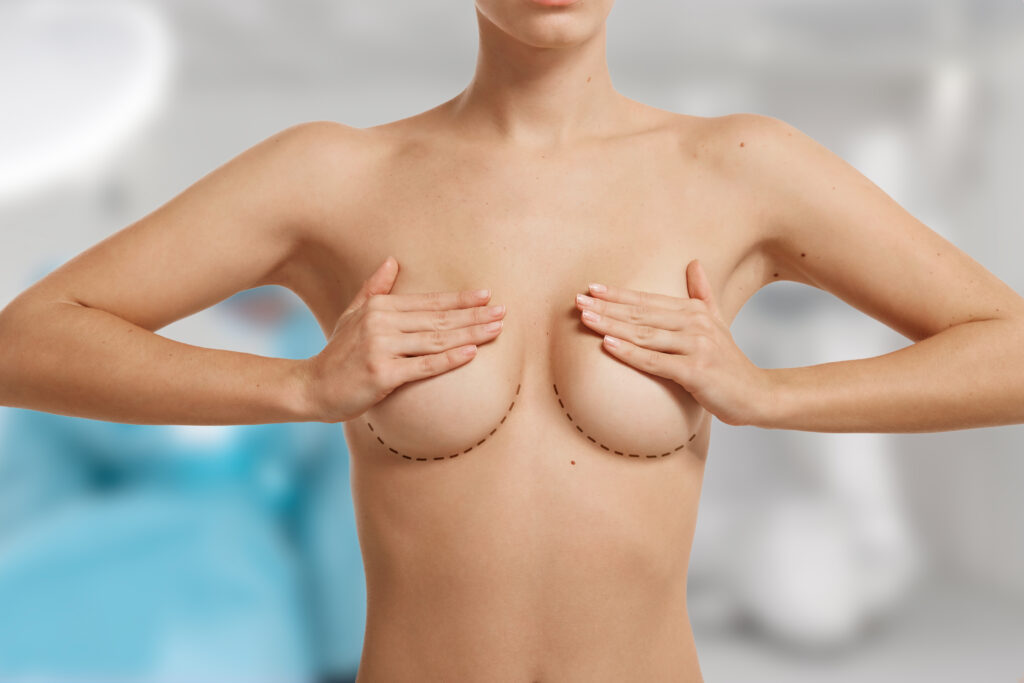Mammoplasty, or simply breast surgery, is truly a life-changing operation that has restored the confidence of thousands of women worldwide. A skillful surgeon can change breasts’ size and shape to achieve the harmonious look you seek. But while it is a very popular procedure, there is still a lot of confusion and myths surrounding it.
To clarify these nuances, we reached out to Dr. Alexandre Charão, a plastic surgeon with more than two decades of experience in the field. In this article, we’ll explain what each type of breast surgery can and can’t achieve and what are the risks of mammoplasty. On top of that, we discussed what factors affect the price of mammoplasty and situations when your social security can cover its cost.
What Is Mammoplasty?

Source: Pexels
First of all, we need to clarify that mammoplasty isn’t just one procedure but a whole branch of cosmetic surgery. There are 3 types of mammoplasty: breast augmentation, breast reduction, and reconstructive mammoplasty. These procedures can solve very different issues but share a common feature—changing the size and shape of breasts to solve an aesthetic or medical concern. Here, we’ll cover the fundamental aspects of each of the 3 types.
Breast Augmentation
Breast augmentation is the second most popular surgical procedure in the world. A surgeon can increase the size of the breasts by placing breast implants or, less commonly, transferring fat to achieve the desired enlargement. Usually, patients who choose breast augmentation surgery look for one of three aesthetic aspects:
- Enlarging breasts to boost self-confidence
- Making breasts more symmetrical
- Restoring the volume after weight loss or pregnancy
“The main reason patients seek mammoplasty surgery is that they don’t feel comfortable about their appearance. So, my goal as a surgeon is to make them feel happy when they look in the mirror.”
— Dr. Alexandre Charão

Source: Freepik
This surgery consists of 4 steps:
- Choosing the place for an incision
- Creating a pocket for an implant
- Adjusting the implant’s position
- Closing the incision with minimal scarring
Reduction Mammoplasty
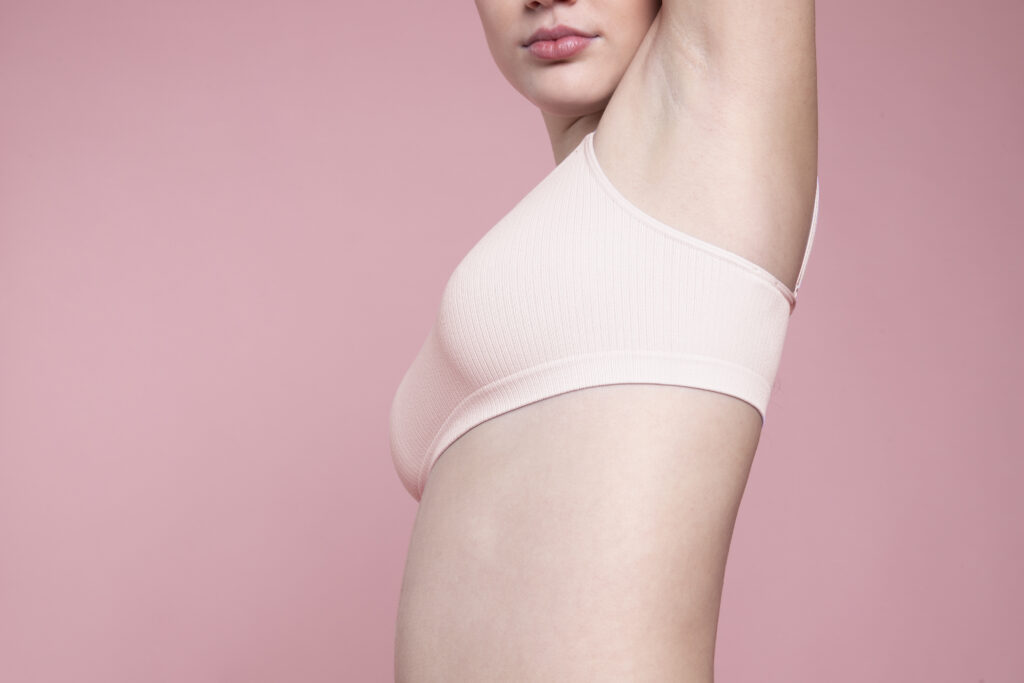
Source: Freepik
Reduction mammoplasty differs significantly from breast augmentation. The doctor removes excess fat and skin to adjust the breasts’ shape and make them smaller. Unlike augmentation surgery, which has a clear aesthetic focus, reduction mammoplasty can also solve health issues. It can become your remedy if you:
- Suffer from chronic back, neck, or shoulder pain
- Struggle to perform physical activities
- Feel unhappy about your appearance
Please keep in mind that even though a surgeon might remove some fat during the operation, mammoplasty is not a weight loss procedure. In fact, this surgery is not recommended for patients with high BMIBody mass index (BMI) is a value derived from the mass and height of a person. The BMI is defined as the body mass divided by the square of the body height. If your goal is to remove the excess fat, you need to start by identifying the underlying cause. Whether it’s the lack of activity, an unhealthy diet, or a hormonal imbalance—you should consult a specialist to choose the treatment approach.
Breast Reconstruction

Source: Pexels
As the name suggests, this procedure aims to recreate the entire breast. Women who suffer from breast cancer often have to undergo mastectomy, a breast removal surgery, to beat the disease. This can have severe impacts on women’s self-esteem, which is why reconstructive mammoplasty can really be a life-changing operation.
There are several types of breast reconstruction, depending on the surgical approach and timing of the operation. A doctor can use implants (like with breast augmentation) or the patient’s own tissues. Also, there are options regarding the timing of the procedure—a person who underwent a mastectomy can start a breast reconstruction procedure right away or wait for a certain amount of time.
As Dr. Charão explains, “Getting an immediate breast reconstruction is the best option for women who fought cancer. However, in cases of very aggressive cancer, we might have to wait for months or even years to start the reconstruction.”
Mammoplasty vs. Mastopexy

Source: Freepik
In principle, mastopexy, also known as breast lift, can be classified as a part of the mammoplasty group of surgeries. However, there is one distinction—mastopexy is only concerned with the shape of the breast, not its size. The desired change is achieved by removing the sagging skin and tightening the supportive tissues.
“Sometimes patients who book a consultation for breast augmentation actually need mastopexy. Their problem is the sagging skin, not the breast’s size, and we can address it with a breast lift.”
—Dr. Alexandre Charão
So, here’s a brief breakdown of what a mastopexy can do:
- Lift your breasts
- Make your breasts more symmetrical
- Improve the elasticity of your breasts
- Fix the positioning of the nipples
- Change the size of the areola
Techniques used for mastopexy can also work for other mammoplasty surgeries, so combining mastopexy with mammoplasty is not uncommon. In this comprehensive review of mastopexy, Dr. Charão explained what medical advancements made these surgeries safer and more effective. Check it out to want to know what to expect from the surgery and see some before and after photos.
Risks of Mammoplasty Surgery
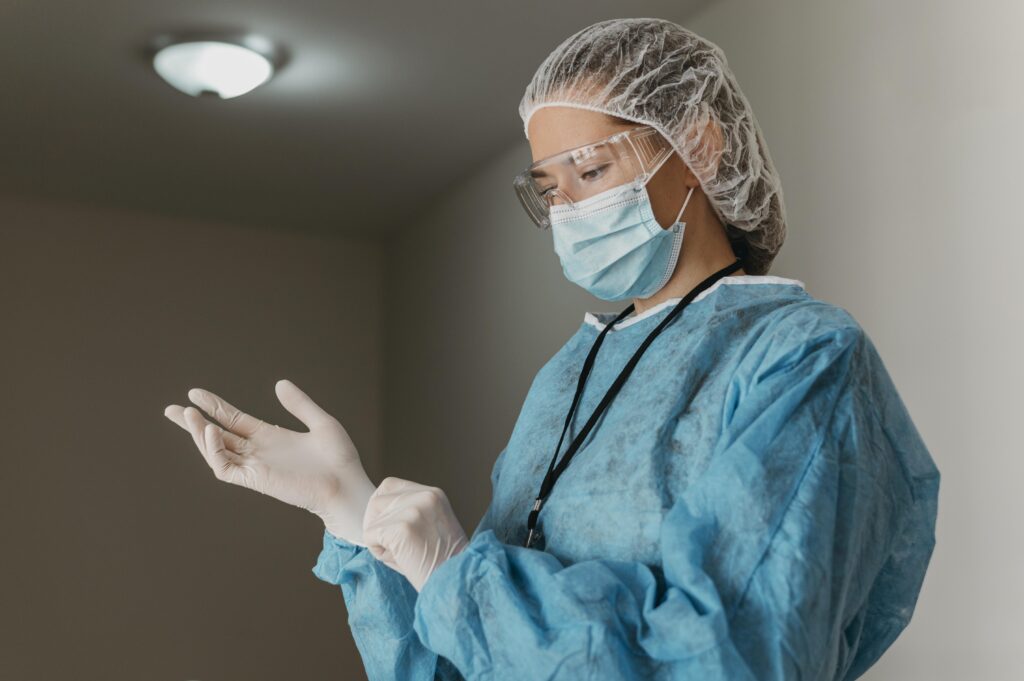
Source: Freepik
While mammoplasty is considered a safe procedure, it is not completely risk-free. Some of the potential complications relate to things like blood clotting or adverse reactions to anesthesia, but some risks are unique to mammoplasty.
🩸 Intense bleeding
Excessive bleeding can complicate any surgery because large volumes of blood obstruct the surgeon’s vision, making the operation much more dangerous. It may also cause hematomas (blood clots), creating a need for drainage or even surgical correction.
💤 Anesthesia risks
There is a range of risks connected to anesthesia, but all of them are rather rare. The most common problem is post-operative nausea, but this issue is temporary (although unpleasant).
🦠 Infection
Getting infected during the surgery has severe health risks. Luckily, these days, infections are extremely rare. The surgeon’s team will go the extra mile to ensure that the operation site is sterile, and you will be prescribed antibiotics to mitigate the risks.
🩹 Scarring
The surgeons do their best to make scars as unnoticeable as possible. “In the case of breast reduction, we reduced the scar length by almost 50% over the years,” says Dr. Charão. Still, it is not possible to avoid scarring completely.
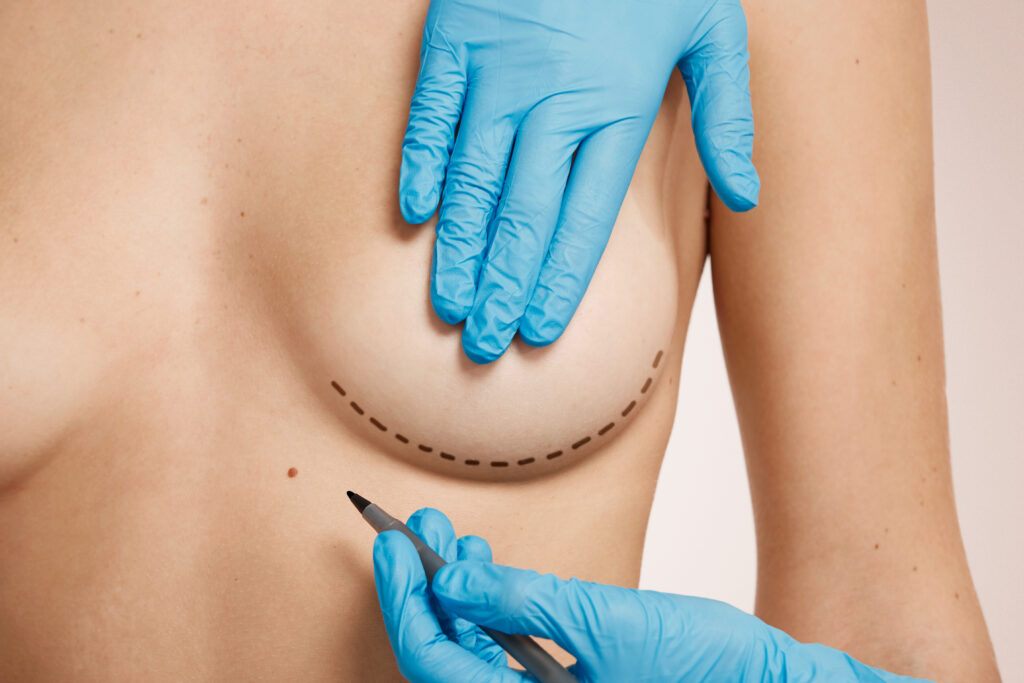
Source: Freepik
These risks are inherent to any type of plastic surgery. At the same time, mammoplasty comes with its own set of challenges. Here are the most important ones:
💢 Implant rupture
Sometimes, breast implants might break and deflate as a result of a surgeon’s mistake, poor manufacturing, or physical trauma. Usually, this doesn’t pose an immediate health threat, but you’ll have to remove or replace the implant later.
🤚 Nipple sensation loss
Despite the popular misconception, complete sensation loss is very rare. With that being said, there can be significant fluctuations in sensitivity after the operation. Usually, these changes are temporary, but if the incision was close to the nipple, recovery might take longer (more than a year).
🔄 Asymmetry
One common cause for concern is breast asymmetry after the mammoplasty operation. Completely identical breasts are a hard task to achieve, so minimal differences in breast sizes are considered normal. At this point, it is essential to understand that realistic expectations are a crucial part of surgery preparation.
Surgery Preparation and Recovery

Source: Unsplash
We asked Dr. Charão about the mammoplasty preparations and post-operative care, and the main takeaway was that both parts require a lot of time. You’ll need to make several lifestyle adjustments before getting surgery:
- Build-up realistic expectations
- Quit smoking
- Abandon certain medications, like blood thinners and herbal supplements
- Lose excess weight
- Undergo a number of medical evaluations
“Normally, patients need to wait for 4–5 months before getting surgery. They need time to get fit. In my team, there is a nutritionist and physiotherapist, and they help with preparations.”
— Dr. Alexandre Charão
On the other hand, recovery from breast surgery can be very different from patient to patient and depends a lot on the type of mammoplasty. Dr. Charão splits the recovery timeline into three 15-day phases—“You won’t be able to work for the first 15 days and will be resting most of the time. After day 30, it is basically normal life, but with some restrictions to physical activities. You can gradually start doing sports 45 days into recovery.”
Pay attention to doctor’s prescriptions, and don’t be afraid to ask for clarifications if necessary. A surgeon will provide you with very specific instructions that will include guidelines on how to sleep and walk, take painkillers and antibiotics, and the time of a follow-up visit.
Dispelling Myths About Mammoplasty
Probably, due to confusion between different types of mammoplasty, there are quite a few myths floating online. Let’s look at the most common ones.
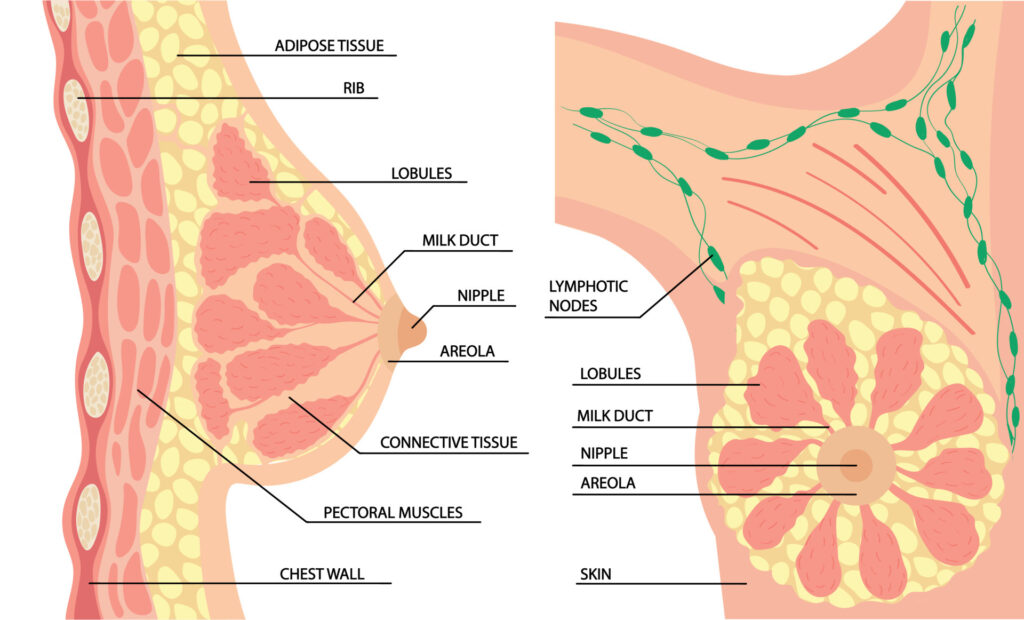
Source: Vecteezy
- Women can’t breastfeed after having a mammoplasty
Women’s ability to breastfeed depends on the milk ducts (tubes that carry milk to the nipple). Unless you have an incision (regardless of the mammoplasty type) around the areola, your breastfeeding function will be intact.
- Nipples lose all sensitivity after the operation
In fact, complete loss of sensitivity is very rare, but you might experience a temporary decrease (or increase) in sensitivity. Sometimes, this change can last for many months, especially if the incision is around the areola.
- Breast reduction increases susceptibility to cancer
This myth is especially harmful. In reality, breast reduction is sometimes recommended as a preventative measure to reduce the likelihood of cancer[1]. In principle, reducing the amount of breast tissue susceptible to cancer is helpful, but it does not rule out the disease chance entirely. Even mastectomy, which is a complete breast removal operation, can’t guarantee 100% protection, as it is not possible to remove absolutely every breast cell.
How Much Does Mammoplasty Cost?

Source: Freepik
We have arrived at the price of the mammoplasty question. The final amount depends on factors like the type of mammoplasty, the complexity of a specific case, the cost of tools and implants, and your location. In principle, the price of augmentation mammoplasty is smaller than reduction or reconstruction. Dr. Charão’s estimate ranges from $4,000 (R$20,000) for standard breast augmentation to $9,000 (R$45,000) for more complicated procedures. Also, a patient should be aware that breast implants don’t last forever and are usually replaced after 20 or 25 years.
Can Insurance Cover the Operation?
As a rule of thumb, insurance companies don’t cover elective cosmetic surgeries like breast augmentation and mastopexy. But if we are talking about reduction mammoplasty, the situation is different. In some cases, insurance can cover surgery if you have a confirmed medical reason for breast reduction. If you are looking for breast reconstruction, health plans in Brazil, the USA, and some other countries cover the cost of the operation, as it is considered a part of the cancer treatment process.
Summary
Mammoplasty is a group of breast surgeries that can achieve various aesthetic and medical goals. We have looked at the fundamentals of each type of mammoplasty—augmentation, reduction, and reconstruction. With this article, you know what these surgeries can and can’t achieve and what risks you should be aware of.
We briefly covered aspects like preparation and aftercare and debunked the most common myths about breast surgery. Also, now you have a realistic mammoplasty price estimate (but don’t forget to check on the insurance coverage).
Thank you for your time! We hope that our article will guide you to a successful surgery outcome!
FAQ
❓ What Is Mammoplasty Surgery?
Mammoplasty is a group of surgeries performed on breasts. There are several types of operation that can increase, reduce, or recreate breasts completely. Therefore, breast augmentation, reduction, and reconstruction surgeries exist.
💰 How Much Does Mammoplasty Cost?
The price of a mammoplasty can go up to $9,000 (R$45,000). The cost depends on the type of operation, complexity of the patient’s condition, location, and price of implants.
🧐 What Is the Difference Between Mammoplasty and Mastopexy?
Mastopexy focuses on changing the shape of the breast and nipple position, while mammoplasty is primarily concerned with the breasts’ size.
⚕️ Can Insurance Cover the Cost of Breast Surgery?
In many instances, insurance companies cover reduction mammoplasty (if you have a medical reason) and reconstructive mammoplasty. Breast augmentation is considered an elective surgery and is not covered.
🩸 What Are the Risks of Mammoplasty?
Potential risks of mammoplasty include intense bleeding, scarring, implant rupture, and unmet expectations. But overall, these risks are rather rare and can be avoided with proper preparation.



